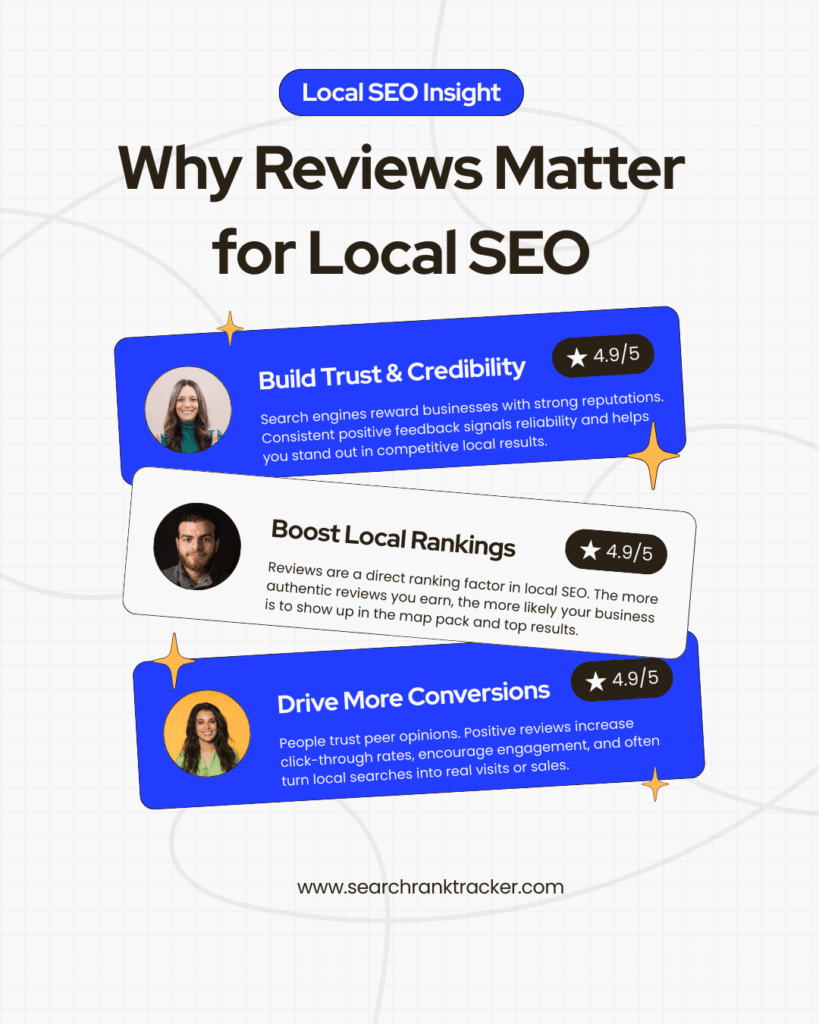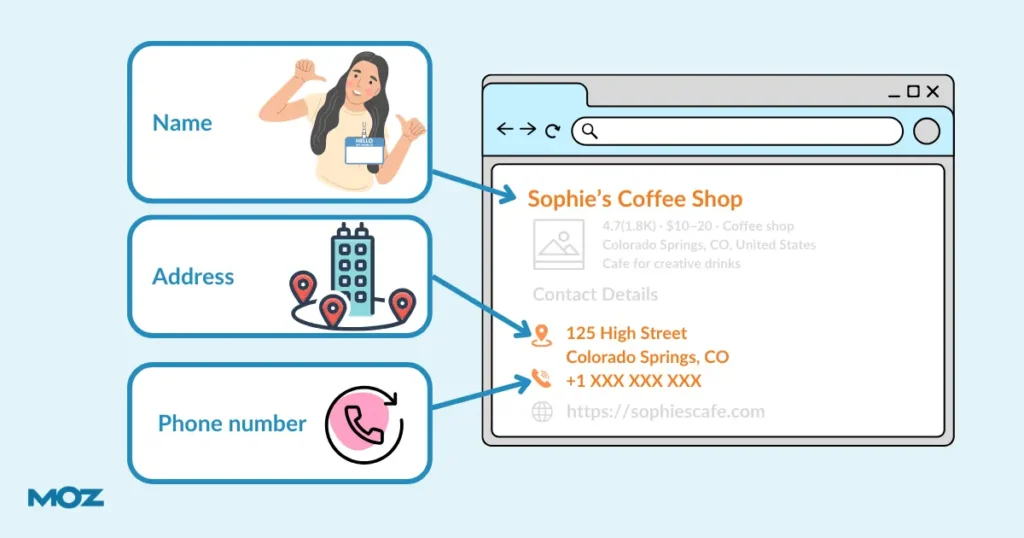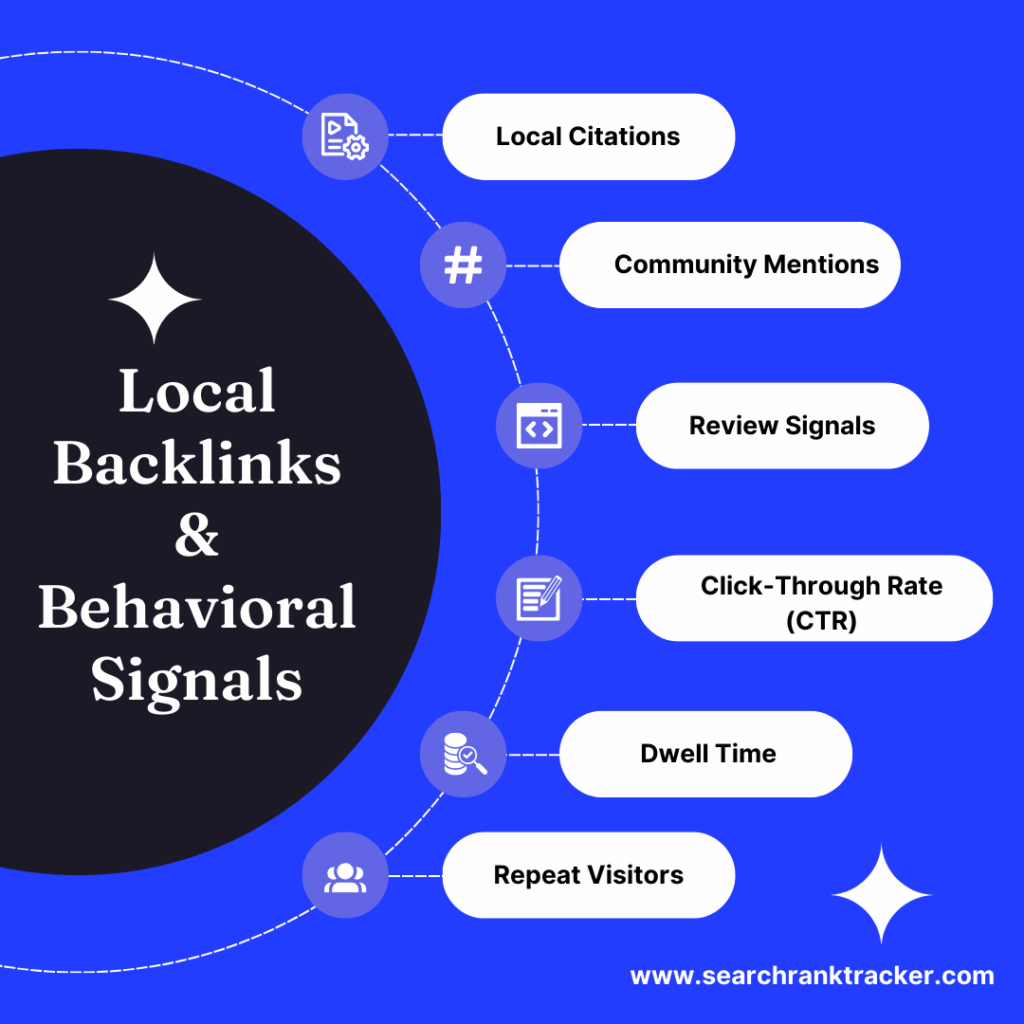Imagine yourself as the owner of a small business in a vibrant city.
Someone nearby searches “best pizza near me,” the search results appear, and your business is nowhere in the search results.
It can be frustrating, right?
In today’s digital world, where 46% of all Google searches have local intent, missing out on local visibility can mean losing real foot traffic and revenue.
Local SEO has grown beyond the point of just showing up on search results. With Google’s algorithm evolving—factoring in everything from AI-driven insights to user behaviour—staying ahead requires a human-centric local strategy.
In this blog, we’ll outline 5 factors that drive your local rankings and show how you can strengthen them step by step.
1. Google Business Profile: Your Online Shopfront
When it comes to local SEO, your Google Business Profile (GBP) acts as the shopfront of your business on the internet and deserves your full attention.
It’s the first thing people see when they find your business on Google Maps or search results.
It is important to have a complete and active Google Business Profile to make you come across as more visible and, importantly, more trustworthy.
What You Can Do:
- Claim and verify your GBP if you haven’t already. It’s free and only takes just a few minutes.
- Add accurate details: your business name, address, phone, opening hours, and service categories.
- Pick one primary category that captures what you do best, then add secondary ones to cover more business ground.
- Upload good photos. People want to see your store, products, or team. Businesses with photos often get more clicks in the map pack.
- Post updates. Offers, events, or quick news posts keep your profile active in Google’s eyes.
2. Online Reviews: The Trust Factor
Anyone who has purchased something on the internet knows the power of “reviews”
It’s not just potential customers who care about reviews; Google also use reviews to measure how trusted and popular your business is.
Ultimately, Reviews directly affect whether someone chooses you or your competitor. Anything below a 3-star average scares off 7 out of 10 potential customers.

What You Can Do:
- Ask for reviews after positive interactions. A polite text or email with a direct link makes it easy.
- Reply to every review. Thank happy customers and handle negative ones calmly and professionally.
- Keep reviews fresh. One or two new reviews each week show Google—and customers—that you’re active and relevant.
- Watch for patterns. If feedback highlights recurring issues, fix them.
And a quick warning: never pay for fake reviews. Google can catch it, and penalties hurt more than a bad rating.
3. NAP Consistency and Citations: Building Trust with Data
When NAP information —NAP stands for Name, Address, Phone — looks different across websites, it leaves Google and customers confused.

This is a bad sign, as this inconsistency sends a bad signal to Google about the credibility of your business.
Then there are citations: mentions of your business in directories like Yelp or Yellow Pages.
What You Can Do:
- Use free tools that scan dozens of directories for inconsistencies in your business details.
- Pick industry-related directories to get listed.
- Keep it uniform. Every detail—from punctuation to abbreviations—should match across your website, GBP, and directories.
- Update quickly if you move locations, change numbers, or rebrand.
4. On-Page SEO: Speaking Google’s Language
Even in the world of local SEO, your website still plays a big role, as your website is an extension of your business.
More importantly, when someone searches “emergency plumber in Melbourne,” and wants more information, they will refer to your website.
On-page SEO is about making sure your site speaks both to searchers and Google’s algorithm.
What to do:
- Research local keywords. Find phrases like “best dentist in [city]” or “emergency plumber near me.” Even 50–100 monthly searches can be powerful.
- Create local pages. If you serve multiple suburbs or cities, give each one its own page with tailored content and a map.
- Fix the basics. Fast load times, mobile-friendliness, and clear site structure all improve rankings.
- Add schema markup. This is behind-the-scenes code that helps Google understand your business details.
Keep it natural. Don’t stuff keywords. Use variations like “affordable plumbing services” alongside your main terms.
5. Local Backlinks and Behavioural Signals: Proving Your Authority
Backlinks—links from other sites to yours—are still one of Google’s strongest signals.
But for local SEO, links from local sources matter the most. A chamber of commerce, a local news site, or a nearby event sponsor link can give you a serious edge.
Then there are behavioural signals. If people see your business in search results and actually click, call, or visit your site, Google interprets that as a sign you’re relevant.
What to do:
- Network with local groups. Team up with nearby businesses for mutual links or sponsorships.
- Get listed in local directories and community sites.
- Optimise for clicks. Write meta titles and descriptions that grab attention.
- Use social media. While shares don’t directly affect rankings, they can boost traffic and engagement signals.

Time to Take Action
These five areas—Google Business Profile, reviews, NAP consistency, on-page SEO, and backlinks—form the backbone of local ranking in 2025.
Businesses that focus here often go from being invisible online to becoming the go-to choice in their area.
SEO isn’t something you do once and forget. It’s ongoing.
Tools like our AI-powered local rank tracker at SearchRankTracker.com help you monitor progress without costly subscriptions. You only pay for what you use.
Here’s your action plan:
- Claim and polish your Google Business Profile.
- Ask a few happy customers for reviews this week.
- Run a citation audit and fix inconsistencies.
- Tweak your website with local keywords and faster loading.
- Look for one or two easy local backlink opportunities.
With nearly one in three consumers searching for a local business every single day, the time to act is now.